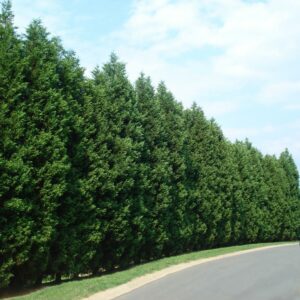One of the most exhilarating aspects of tree care begins with planting a young sapling, watching as it takes root, and then observing its steady growth towards the skies. This journey from a little sapling to a giant tree is filled with anticipation and wonder. How long does it take for a tree to grow? How soon can you expect it to offer shade and the plethora of benefits associated with mature trees? The growth rate and timeline can vary widely depending on the species, environmental conditions, and care provided. In this blog, we’ll explore the stages of tree growth, factors influencing growth rates, and how you can potentially speed up the process. We’ll also highlight five fast-growing, non-invasive tree species suitable for planting in the United States.
Tree Growth Stages
Trees go through multiple stages in their life cycle, from seed germination to sapling to mature tree. Much like people, the fastest growth happens during the early years before they reach full maturity.
1: Seed Germination
The journey of a tree begins with a single seed. The germination process, which can last from a few weeks to several months, depends heavily on the species and environmental conditions. Some trees, like oaks, have a long dormancy period before their seeds begin to sprout, requiring specific conditions to break dormancy.
2: Seedling and Sapling Stage
Once germinated, the seedling begins its slow ascent, establishing roots and sprouting its first leaves. This stage is crucial and the most vulnerable, as the young plant competes for sunlight and nutrients. Over several years, the seedling will grow into a sapling, gradually becoming more robust and resistant to environmental stressors.
Mature or Fruit-Bearing Tree
The time it takes for a tree to reach maturity varies significantly among species. Some, like the fast-growing hybrid poplars, can reach maturity within a decade, while others, such as oaks, may take several decades to produce their first acorns. Maturity is often marked by the tree’s ability to reproduce, producing flowers and seeds.
Factors that Affect Tree Growth
Several factors influence how quickly a tree grows, including:
– Species: Each tree species has a genetic growth rate, with some growing rapidly and others more slowly.
– Soil Quality: Nutrient-rich, well-drained soil supports faster growth.
– Water: Adequate moisture is crucial, though too much or too little can hinder growth.
– Sunlight: Sufficient sunlight is necessary for photosynthesis, driving growth.
– Climate: Temperature and weather conditions greatly affect growth rates. Extreme weather can stress trees, slowing their growth.
How to Make Trees Grow Faster?
While you can’t change a tree’s genetic growth rate, you can optimize conditions and provide tree health care to encourage healthier, faster growth:
– Proper Planting: Planting a tree in a suitable location with ample space, sunlight, and good soil can significantly impact its growth.
– Regular Watering: Especially in the tree’s early years, regular watering helps establish roots.
– Mulching: Applying a layer of mulch around the tree helps retain soil moisture and regulate temperature.
– Fertilization: Nutrient supplements, when necessary, can support faster growth.
– Pruning: Proper pruning helps stimulate growth and maintain tree health.
The Cons of Quick Growth
While fast growth might seem desirable, it can come with drawbacks. Rapidly growing trees often have weaker wood, making them more susceptible to damage from winds, weather, and pests. Their lifespan can also be shorter compared to slow-growing species.
Five Trees That Grow Fast to Plant in Your Yard
1. Red Maple (Acer rubrum): Known for its stunning fall foliage, the red maple can grow up to 2 feet per year, thriving in a variety of soil types and conditions.
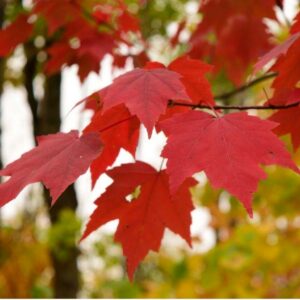
2. River Birch (Betula nigra): With a growth rate of up to 2.5 feet per year, the river birch is not only fast-growing but also resistant to many diseases and pests.
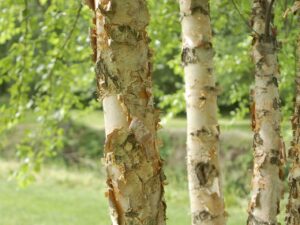
3. Poplar (Populus spp.): One of the fastest-growing trees, poplars can shoot up an astonishing 8 feet per year under optimal conditions.
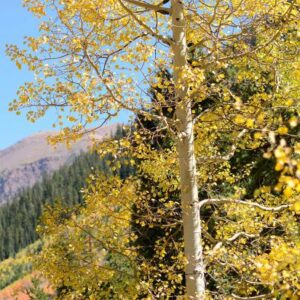
4. Northern Catalpa (Catalpa speciosa): With its large heart-shaped leaves and beautiful white flowers, the northern catalpa can grow up to 2 feet per year, offering quick shade and aesthetic appeal.
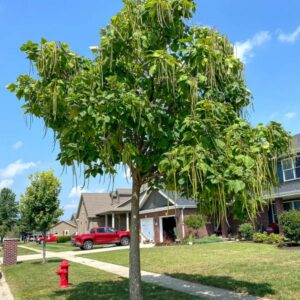
5. Leyland Cypress (Cupressocyparis × leylandii): A popular choice for privacy screens and windbreaks, the Leyland Cypress grows 2-3 feet per year and has dense foliage. It features feathery, aromatic foliage and has a pyramidal growth habit.
